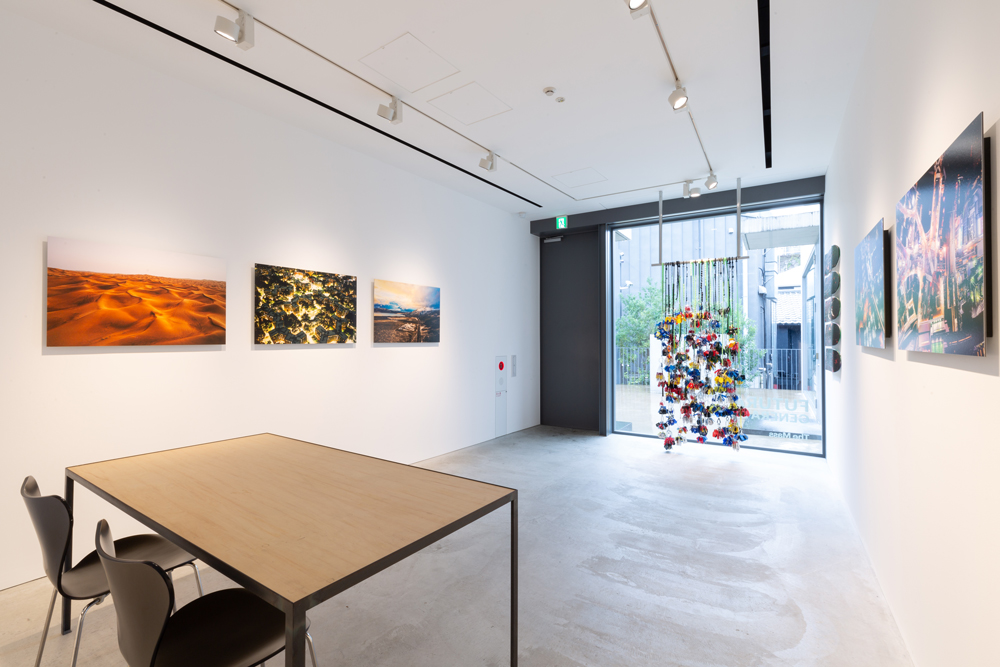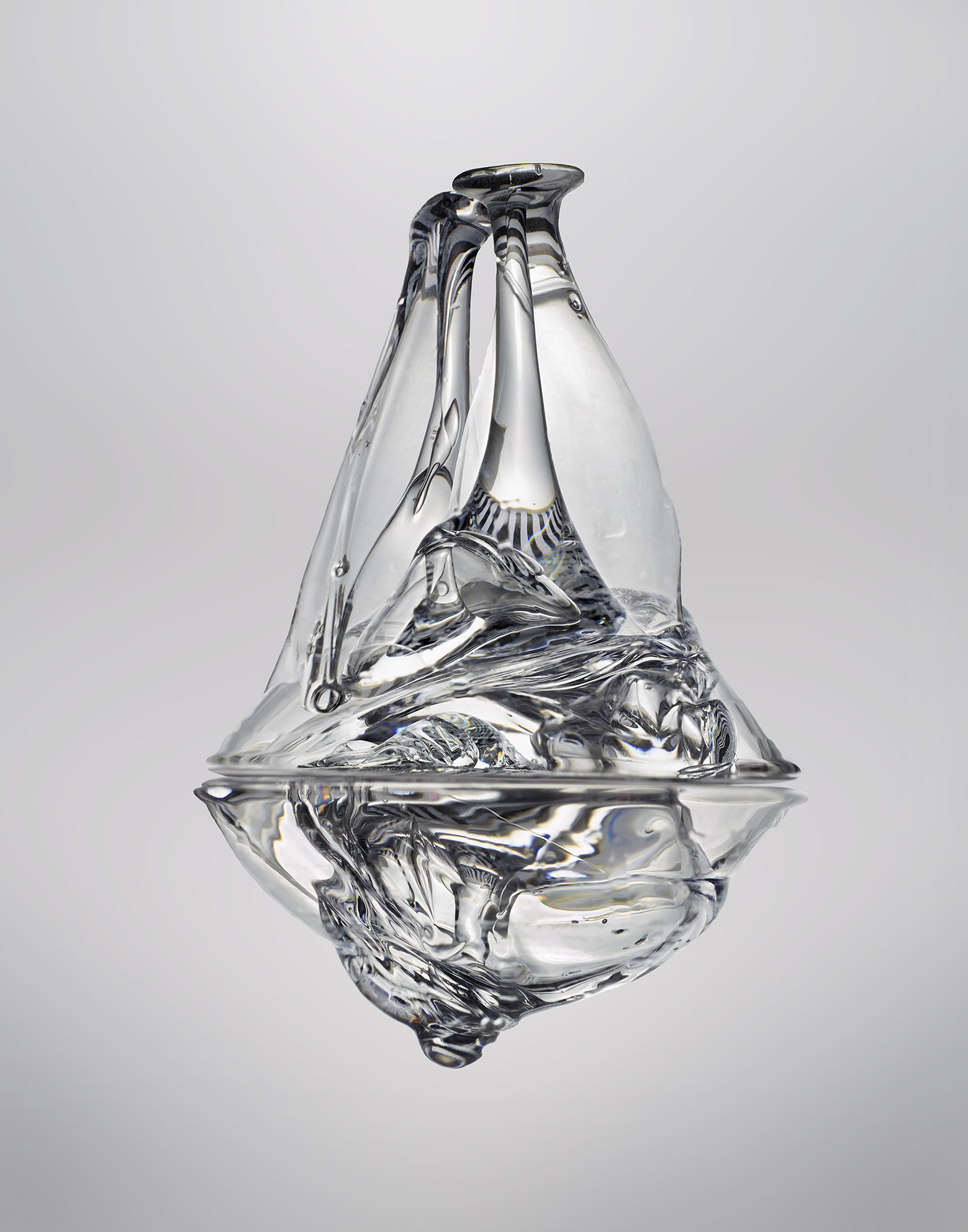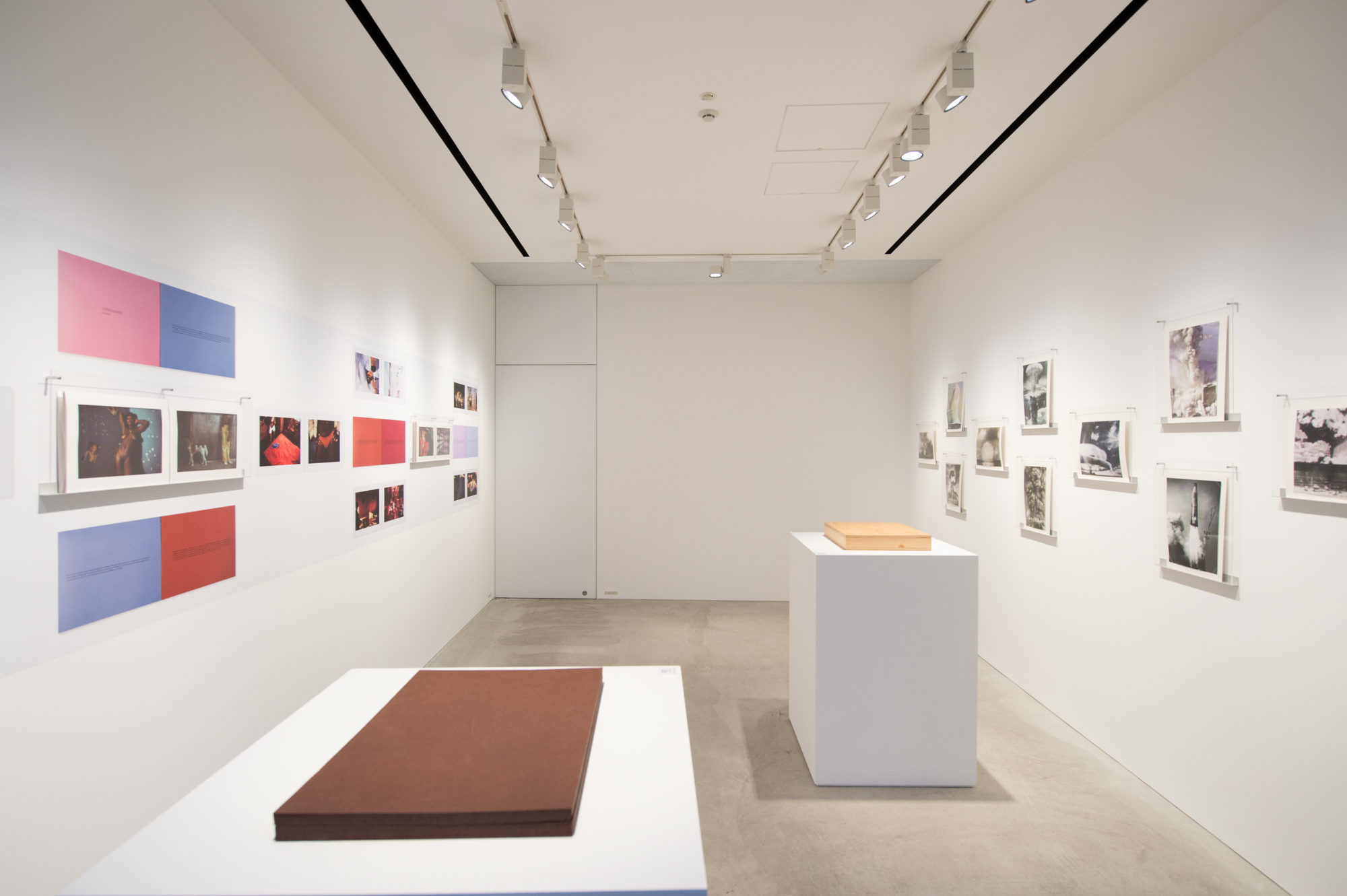2019
GENERATION Z
Hours 12:00 – 19:00
Closed Tuesday and Wednesday
Free Admission
from COMMAND Z to GENERATION Z
at the time of the COMMAND Z exhibition almost (20) years ago it was the dawn of the new millennium. at that time, GENERATION Z was arriving. I feel it is important to reflect on my past, as well as look to the future. McGurr explains. “Graffiti was a way for me to exist. I wanted the world to know my name. I wanted to be somebody…you just need to keep moving. don’t stop. just keep moving.”
The exhibition will showcase 4 different kinds of sculptures and 27 specially-commissioned canvas works–created exclusively during a residency in Japan in 2019.
Futura:
A pioneer when Graffiti met the formal gallery ecosystem, artist Futura 2000 (born Leonard Hilton McGurr) was known as early as the 1970s for his radical approach in the street, introducing abstraction to what was an entirely letter-based discipline. His work on canvas caught attention in the 1980’s, and established him as a leading voice within a wider art movement that included the likes of Jean-Michel Basquiat, Keith Haring, and Kenny Scharf. Entirely self-taught in what he calls “the subway school”, Futura has been compared to Wassily Kandinsky for his mastery of color, geometric composition and line—and is celebrated alongside his friends Dondi White and Rammellzee for his progressiveness and of-the-moment dynamism.
© Futura, POST PRODUCTION, 2019
(90 × 150 × 4.8 cm)
Liquid and Magnetic Radiation
Hours 12:00 – 19:00
Closed Tuesday and Wednesday
Free Admission
The Mass is pleased to present Seb Janiak’s first solo exhibition in Japan.
In a photographic career spanning over 30 years, Seb Janiak has explored a remarkably diverse range of areas. From his matte paintings with their revolutionary new techniques and unique perspectives, Janiak has successfully preserved a sense of cohesion while covering the full range of possibilities offered by photography. Janiak started out as a young freelance graphic designer without specific aspirations to be an artist, who wanted above all to give free rein to his curiosity and to experiment with a piece of equipment which he discovered by chance and which opened up the possibility of creating stunning images.
In 1987, images could be created and digitally enhanced using Quantel Paintbox. Janiak was one of the very first people to extend its use beyond the TV and film applications for which it was originally designed in order to produce photographic images for exhibition. In these photographs, scenes of unbridled fantasy were reconstructed with a hitherto unprecedented degree of realism. This marked the dawn of a new photographic esthetic. A variety of different shots taken all over the world could be assembled digitally into large- format images conjuring up a sci-fi world suffused with the staggering transparency of photography. This new style of image would become the staple fare of the next two decades, but Janiak’s achievement lay in being the first to create them.
Seb Janiak is a pioneer, spurred on by a restless desire to observe the world, challenge it and apply his artistic skills to reshaping it. He has an unquenchable thirst for everything that supplements our understanding of reality, opens up new perspectives and creates meaning. Whether he is dealing with institutionalized phenomena (religion, science, and astrophysics in particular) or niche areas (esotericism, ufology) his imagination draws on humanity in all its boundless diversity, transcending time and place. An overview of his work is instructive in this respect.
The success of his early digital photos was followed by a meteoric rise in the world of advertising in 1995. He made a seamless transition from still images to video and the most influential musicians quickly approached him to direct their music videos, including Daft Punk, Janet Jackson, and Robbie Williams.
In 2005, after ten years of frenetic activity, major health problems forced Janiak to make radical lifestyle changes. At the height of his artistic powers, he resumed his experiments with photography, free from the constraints of commissioned work. Drawing inspiration for his work from a variety of sources over the years such as traditional oriental texts including the Tibetan Book of the Dead or the history of Western art, Janiak created strikingly powerful ensembles in which human figures were replaced by nature and ideas.
Since 2009, Janiak has set new parameters on this research by restricting himself to the techniques of analog photography, namely double exposure, superimposition and photomontage.
—Paul Frèches, former gallerist and curator, currently cultural attaché at the Consulate general of France in Shanghai.
Liquid (2014)
The perpetual struggle of the forces in action (those of gravity and fluid dynamics) between two fluids — one liquid and one gas — poses the question of pure form. The revealing of this struggle proves that what we actually see can be seen only via its environment. Form itself does not exist as such without the universe which surrounds it, without the knowledge / information which gives it shape, as the adage “Form is emptiness and emptiness is form” reminds us.
It is always useful to quote what follows in the text:
“In absolute terms, the world has no real or concrete existence. The relative aspect is the world of phenomena, and the absolute aspect is emptiness. Phenomena occur in a process of interdependence between causes and conditions, but nothing exists in itself or by itself. The direct contemplation of absolute truth transcends all intellectual concepts and all duality between subject and object.”
Given that vacuity does not empty things of their content since it is their true nature, I again used here the technique of lighting by reflection from the environment. For the bubbles in this series, a liquid was used together with a valve system connected to a compressed air canister. The viscosity of the liquid acts to slow down the changes in the pressure forces involved. Each bubble is thus compressed beneath the one above.
Magnetic Radiation (2011 – 2012)
For the Magnetic Radiation series, it was the use of a ferrofluid liquid which was the obvious choice. This liquid laden with ferric nanoparticles enables us to visualize a magnetic field as it curves to follow the force lines of the magnetic field generated by powerful magnets. The set-up was designed so as to modulate the power and the spacing of several magnetic fields in parallel or in opposition, or both at the same time. Since the liquid is jet black, it is only possible to illuminate it by reflection from its environment.
This can be described in terms of a “revelation” in the sense that the hidden realm is revealed in images. The natural aesthetic result refers back to the creation of the universe when magnetic fields shaped matter, atom by atom to provide a structure, so that 14 million years later we have become what we are living, thinking beings.
Technical Note: There are no changes made to the colors, no retouching or special effects applied to the image in post-production. As of 2009, Janiak has set new parameters on this research by restricting himself to the techniques of analog photography used since 1850, namely double exposure, superimposition and photomontage inspired by pioneers of photography such as Henry Peach Robinson, Édouard Baldus and Gustave Le Gray.
Seb Janiak The Kingdom
Limited Edition of 100 copies
Softcover
42 x 26 cm
39 pages
Text in English and Japanese
2019
Mimesis Silk Scarf
Limited Edition of 5 Mimesis (12 scarves per motifs)
Soie 100% Silk, Hand Rolled Hems
94 x 94 cm
Made in France, 2019
Special Order (4 weeks)
© Seb Janiak, Liquid 01, 2014
12 TITLES
Hours 12:00 – 19:00
Closed Tuesday and Wednesday
Admission: Free
The Mass is pleased to present Toluca Éditions.
Time Capsules of Photography
The professional photography studios that proliferated in Japan in the 1860s initially produced portraits, in the form of daguerreotypes and then ambrotypes. Ten years after the introduction in 1848 of the camera into Japan by Shimazu Nariakira, who would later become the feudal lord of Satsuma, the opening up of foreign concessions in the country’s principal port cities provided Japan with Western technologies, including photography. Although the use to which it was put ―mainly portraiture and landscapes― was similar to its country of origin, the practices that developed in Japan around this remarkable, recently imported invention differed. Unlike in the West, where the glass plates were generally set off within a gilt frame, photographs were stored unframed in boxes of Japanese cypress wood, conceived in the manner of the tomobako, the boxes to be found accompanying any work of traditional craftsmanship. These boxes would generally include a mention, written in ink, of the date the image was captured and the identity of the subject. This traditional practice of preserving portraits, and the call inherent in it to a more private contemplation of the images, has since been lost in Japan, owing to the generalized use of photographic prints (on either albumen or gelatin silver print paper), which created the more lasting format of the photographic album. And the development of photographic printing techniques has in turn replaced this more personal practice by the photobook, whose crucial role in the place of photography at the heart of twentieth-century visual culture is well known. The integration of photography into publishing, in book form, has rendered its connection with text, and therefore with literature and theory, inseparable. Today, in an age of dematerialized photography and digitalized portfolios, the idea of photographs on glass plates in an ornamented box has something of the air of a fossil.
Nevertheless, a sumptuous and uncompromising approach to publication has made the photographic object endure by renewing it. Halfway between the boxed set and the photobook ―itself threatened by the digital dissemination of images―, Toluca Éditions has been creating unique photographic objects for fifteen years now. The principle is simple but unprecedented: an original case contains a combination of sheets bearing unpublished texts and original photographic prints. A photographer, a writer, and a designer submit individually the component parts of a work which is then put together and published by Toluca Éditions.
The publications of Toluca Éditions have maintained the text element of the photobook. This is still more striking in that the texts are not analyses (as in a monograph) nor accounts written by the photographers themselves (as in the works of Chris Marker or even of Nobuyoshi Araki), but constitute rather a work in themselves, with a supple yet intimate relation to the visual world of each series of photographs. Toluca’s publications have also preserved and developed the photobook’s relation to twentieth-century cultural production techniques, through the incorporation of three practices of the multiple: photography, text, and design. These three creative disciplines are based on a technical infrastructure that implies serial production. In this sense, each one of the publications of Toluca Éditions is a contemporary cultural object par excellence.
In an art of the multiple ―as is thrice the case here―, the very principle of the limited edition is an arbitrary decision, often motivated by commercial calculations: why limit the run of a photograph or a print ―which is multiple by nature― to just a few dozen copies, on the economic model of a sculpture? At Toluca Éditions, it is precisely the sculptural quality of the design applied to the production of each title that justifies the publication of small runs: the box contains a total work at the intersection of design, literature, and photography. An essential component in the appreciation of any one of the publications of Toluca Éditions is precisely its texture. Not only the grain of the photographs (and Toluca Éditions displays on this point a versatile taste, from the cleanly defined images of Candida Höfer to the supersaturated images of Tokyo produced by Daidō Moriyama), but also the search for the most appropriate paper (a constant also of quality photobooks), as well as a container which, in its material and its form, will crystalize the themes of the photographic and literary world it encloses.
More fundamentally, the uniqueness of Toluca’s productions resides in their complexification of the temporality proper to photography. Each photograph has its own temporality, marked initially by the moment at which it is captured, and by the semantic references of the image, which are then modulated by its intersection with a text. This ensemble, once it has been acquired by a collector, undergoes a slow aging process, protected from the elements, in its custom case. Every copy of Toluca’s limited editions is therefore a time capsule.
When it is opened, the case provides a space appropriate for a non-linear publication. The choices provided by a number of unbound sheets allow the photographs and texts to be explored as in an exhibition, reminiscent of the paradigm of Marcel Duchamp’s La Boîte-en-valise. Instead of a binding, one may find some folded sheets. The folds create not only a compartmentalized space and a new dimension, but also endows the reading of them with a different timeframe. The fold is a non-verbal frontier.
Let us imagine now the little universe formed by the forty-two titles published by Toluca Éditions, side by side in the same place, like so many microcosms, each one containing its own timeframe and a unique vantage point on reality. Photography lovers can only await with impatience the editions to come, which will continue to infuse new life into this complex, unique, and effervescent publishing venture.
Kei Osawa
Associate researcher, Intermediatheque, University Museum, University of Tokyo.
Toluca Éditions is an extraordinary publishing house based in Paris, founded in 2003 by Alexis Fabry and Olivier Andreotti. Each project is the result of a close collaboration between an artist using photography, a writer, and a designer, who contributes a custom-made slipcase. The ‘artist’s book’ as it had been understood since the early twentieth century, has given way to a hybrid art object, which occupies a novel position in the field.
Olivier Andreotti is a graphic designer and artistic director. He works in a range of different fields, including regular publications, limited editions, exhibition catalogues, corporate identity, signalling systems, and exhibition design (at the Fondation Cartier pour l’art contemporain, the Jeu de Paume, the Museum of Islamic Art in Doha, the Musée d’Art moderne de la Ville de Paris, and the Museo Universitario del Chopo in Mexico City, among others venues), as well as on special projects for various prestigious brands, including Louis Vuitton, Veuve Clicquot, Hennessy, and Van Cleef & Arpels.
Alexis Fabry is the curator of the Leticia & Stanislas Poniatowski and the Anna Gamazo de Abelló photography collections. He has curated numerous exhibitions, including Urbes Mutantes (International Center of Photography, New York, 2014), Latin Fire (CentroCentro, Madrid, 2015), Daido Moriyama, Daido Tokyo (Fondation Cartier pour l’art contemporain, Paris, 2016), Transiciones (Círculo de Bellas Artes, Madrid, 2016), and Géométries Sud (Fondation Cartier pour l’art contemporain, Paris, 2018). He works as a consultant for private collections and is deputy artistic director of Hermès Maison.
VOL. 42 • Thomas Ruff, Patrick Bouvet, Herzog & de Meuron, World Wide Cloud, 2018 © Toluca Éditions



